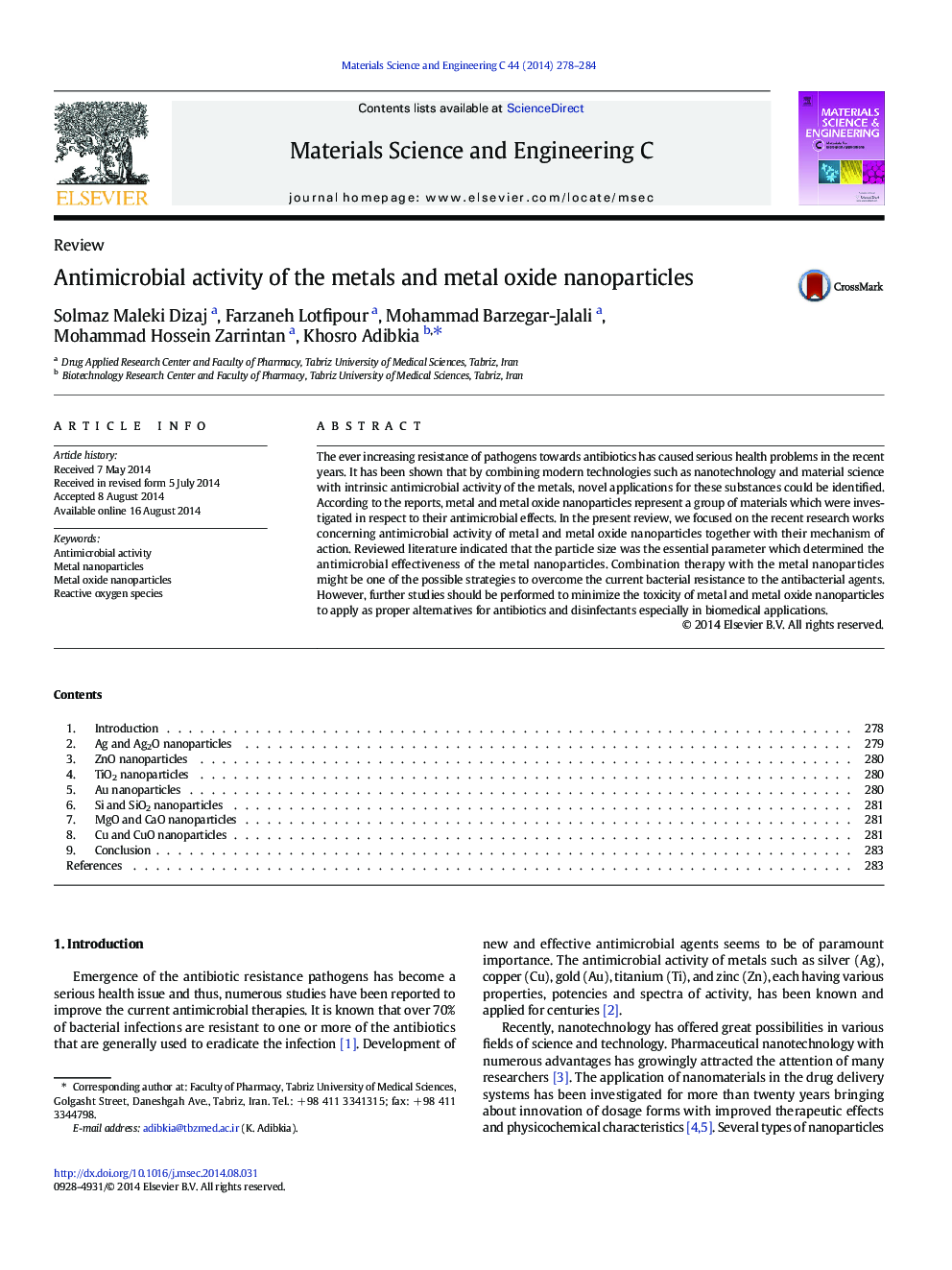| Article ID | Journal | Published Year | Pages | File Type |
|---|---|---|---|---|
| 1428251 | Materials Science and Engineering: C | 2014 | 7 Pages |
•Antibiotic resistance of microorganisms can seriously affect the public health.•Developing the new agents to inhibit microbial growth is necessary.•Metal and metal oxide nanoparticles show potential antimicrobial activity.•Functionalization of metal nanoparticles can decrease their toxicity.•Combination therapy with metal nanoparticles improves activity of the antibiotics.
The ever increasing resistance of pathogens towards antibiotics has caused serious health problems in the recent years. It has been shown that by combining modern technologies such as nanotechnology and material science with intrinsic antimicrobial activity of the metals, novel applications for these substances could be identified. According to the reports, metal and metal oxide nanoparticles represent a group of materials which were investigated in respect to their antimicrobial effects. In the present review, we focused on the recent research works concerning antimicrobial activity of metal and metal oxide nanoparticles together with their mechanism of action. Reviewed literature indicated that the particle size was the essential parameter which determined the antimicrobial effectiveness of the metal nanoparticles. Combination therapy with the metal nanoparticles might be one of the possible strategies to overcome the current bacterial resistance to the antibacterial agents. However, further studies should be performed to minimize the toxicity of metal and metal oxide nanoparticles to apply as proper alternatives for antibiotics and disinfectants especially in biomedical applications.
Graphical abstractFigure optionsDownload full-size imageDownload as PowerPoint slide
